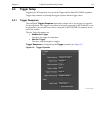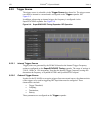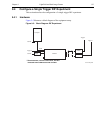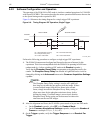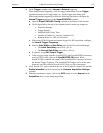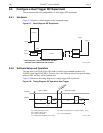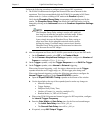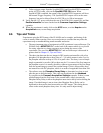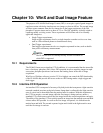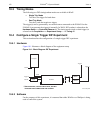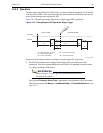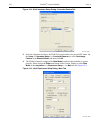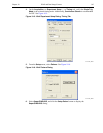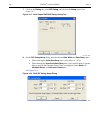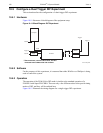
161
Chapter 10: WinX and Dual Image Feature
The purpose of PI-MAX4 Dual Image Feature (DIF) is to acquire a pair of gated images in
rapid succession with delay time between two images as short as 450 ns. The second image
will have some remnants from the first image due to the longer persistence of the P46
phosphor. Exposure times can be as short as 2.5 ns. The DIF capability is ideally suited to
capturing rapidly evolving events. These experiments will fall into one of two broadly
applicable categories:
• Single Trigger experiments;
Single trigger experiments involve a single impulse event that evolves over time,
such as a laser-induced plasma or luminescence decay.
• Dual Trigger experiments.
Dual trigger experiments involve two impulses separated in time, such as double
laser pulse velocimetry measurements.
NOTE:
The PI-MAX4:1024i is currently the only PI-MAX4 camera on
which DIF is supported.
10.1 Requirements
The PI-MAX4 must use an interline CCD. In addition, it is recommended that the intensifier
have a fast decay phosphor (P46.) Since DIF operation involves acquiring images in rapid
succession, phosphor persistence can become the limiting factor in the rate of image
acquisition.
WinView or WinSpec software (version 2.5.26 or higher) can control the DIF functionality
of the PI-MAX4 and provide full access to the two DIF timing modes: single trigger and
dual trigger.
10.2 Interline CCD Operation
An interline CCD is composed of an array of hybrid pixels that incorporate a light-sensitive
area and a masked area into each pixel element. Image data is collected in the light-sensitive
area of a pixel and is then shifted into the masked area for readout. With this architecture,
the CCD can acquire a second image while the first image is being read out, unlike a
standard CCD, which must read out the first image before the second acquisition can begin.
The ability of the interline CCD to quickly transfer an image into the masked areas and hold
it there makes DIF possible. As soon as the first image is acquired, it is shifted into the
masked area and held. The second exposure begins and is held in the light-sensitive area
until the first image is read out.



